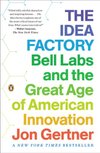Sublime
An inspiration engine for ideas
he helped start a research group called MIDAS, which stood for Mining Data at Stanford.
Steven Levy • In The Plex: How Google Thinks, Works, and Shapes Our Lives
He regularly invited top computer scientists to his office to explain emerging trends in hardware and software. He had three home computers. He was typing a future bestseller, Earth in the Balance, on an early laptop. He went to computer-industry conferences, wrote articles for Scientific American, and fluently spoke the language of VLSI and AI,
... See moreMargaret O'Mara • The Code
"The 10 Best Books on Nature and the Environment," according to @MarkTercek.
https://t.co/kRibcb3n9f
Stewart Brandx.comMaterial and bio-regional transformation
We are therefore stumbling, unknowingly, into a material revolution. The most forward-looking clothing companies no longer “sell” garments; they assume custodianship, inviting the wearer into a public-trust relationship with fibres that must be stewarded, not discarded.
The same logic scales to buildings,... See more
We are therefore stumbling, unknowingly, into a material revolution. The most forward-looking clothing companies no longer “sell” garments; they assume custodianship, inviting the wearer into a public-trust relationship with fibres that must be stewarded, not discarded.
The same logic scales to buildings,... See more
Indy Johar • We Have Failed—Now Let’s Get Serious
Paul Stamets’s Mycelium Running – How Mushrooms Can Help Save the World (2005) is an invaluable resource for regenerative culture designers.
Daniel Wahl • Designing Regenerative Cultures

Richard Buckminster Fuller,
